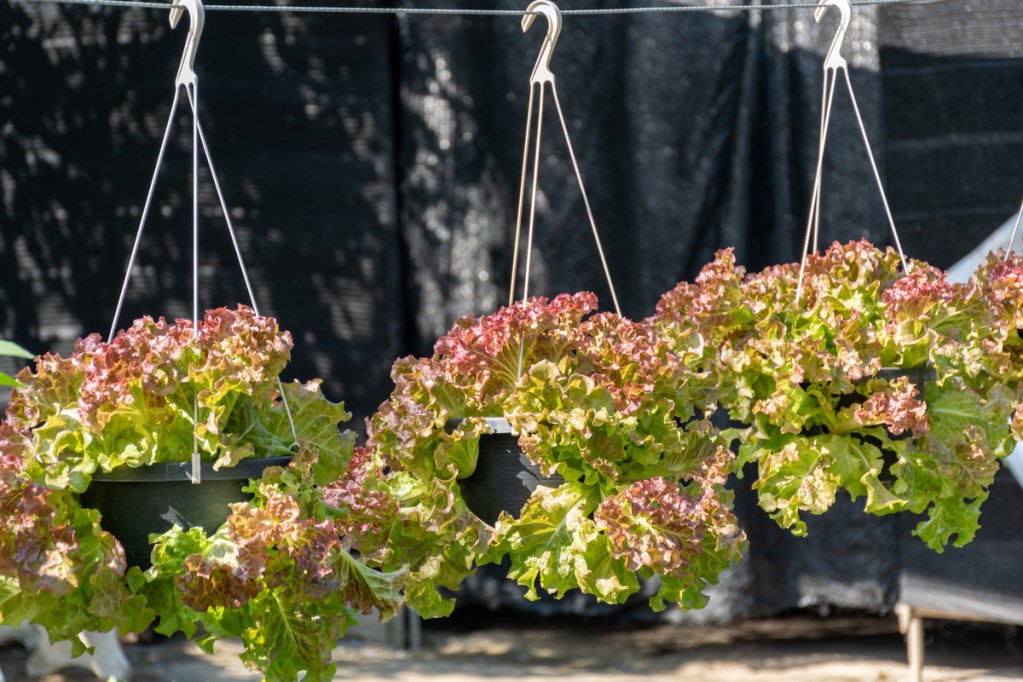Grow Lettuce in Hanging Baskets: Easy Guide

Imagine transforming your balcony or patio into a lush, edible garden. Picture vibrant greens cascading from above, ready to be plucked and enjoyed in your favorite salad. Growing lettuce in hanging baskets is not only a space-saving solution but also a delightful way to bring vertical gardening into your life. Let's dive into this easy guide on how to grow lettuce in hanging baskets and explore the joy of container gardening.
Why Grow Lettuce in Hanging Baskets?
Vertical gardening is a trend that's here to stay, and for good reason. It maximizes space, adds a touch of beauty, and makes gardening accessible to anyone, regardless of their living situation. Lettuce, with its shallow root system and quick growth, is an ideal candidate for hanging baskets. Plus, it's a great way to keep pests at bay and ensure your greens stay clean and fresh.
Choosing the Right Lettuce Varieties
When it comes to growing lettuce in hanging baskets, not all varieties are created equal. Loose-leaf and butterhead lettuces are your best bets. They grow quickly and can be harvested continuously, making them perfect for container gardening. Some popular choices include:
- Black Seeded Simpson: A classic loose-leaf variety known for its quick growth and mild flavor.
- Buttercrunch: A butterhead lettuce with tender, sweet leaves.
- Red Sails: A loose-leaf variety with beautiful red-tinged leaves.
Selecting the Perfect Hanging Basket
The right hanging basket can make all the difference. Opt for a basket that is at least 12 inches in diameter to provide ample space for your lettuce to grow. Ensure it has good drainage to prevent waterlogging. Coco coir liners are a great choice as they retain moisture and allow for good air circulation.
Preparing Your Hanging Basket
Start by lining your basket with a coco coir liner. Fill it with a high-quality potting mix that is well-draining and rich in organic matter. Avoid using garden soil, as it can be too heavy and compacted for container gardening.
Planting Your Lettuce
Once your basket is prepared, it's time to plant your lettuce. You can either start from seeds or use seedlings. If using seeds, plant them about 1/4 inch deep and space them about 2-3 inches apart. If using seedlings, plant them at the same depth as they were in their original containers, spacing them about 4-6 inches apart.

Sunlight Requirements
Lettuce thrives in cooler temperatures and prefers partial shade, especially during the hotter months. Aim for about 4-6 hours of sunlight per day. If your hanging basket is in a sunnier spot, consider providing some shade during the hottest part of the day to prevent your lettuce from bolting (going to seed).
Watering Tips
Watering is crucial when growing lettuce in hanging baskets. The key is to keep the soil consistently moist but not waterlogged. Check the soil daily by sticking your finger about an inch deep. If it feels dry, it's time to water. Remember, hanging baskets can dry out quickly, especially in warm weather.
Fertilizing Your Lettuce
Lettuce is a light feeder, so it doesn't require much fertilizer. A balanced, water-soluble fertilizer applied every 2-3 weeks should be sufficient. Alternatively, you can use a slow-release fertilizer mixed into the potting soil at the time of planting.
Harvesting Your Lettuce
One of the joys of growing lettuce in hanging baskets is the ability to harvest continuously. For loose-leaf varieties, you can start harvesting once the leaves are about 3-4 inches long. Simply snip off the outer leaves, allowing the inner leaves to continue growing. For butterhead varieties, you can harvest the entire head once it reaches the desired size.
/colorfulpots-56a6704a3df78cf7728deb0e.jpg)
Troubleshooting Common Issues
Even with the best care, issues can arise. Here are some common problems and their solutions:
- Bolting: If your lettuce starts to bolt, it's likely due to too much heat or not enough water. Provide some shade and ensure consistent moisture.
- Wilting: Wilting leaves can be a sign of both overwatering and underwatering. Check the soil moisture and adjust your watering schedule accordingly.
- Pests: While hanging baskets can deter some pests, others like aphids and whiteflies can still be a problem. Use insecticidal soap or neem oil to control infestations.
Conclusion
Growing lettuce in hanging baskets is a rewarding and space-efficient way to enjoy fresh greens right at your doorstep. With the right variety, proper care, and a bit of patience, you'll be harvesting your own homegrown lettuce in no time. So, why not give vertical gardening a try and transform your outdoor space into a lush, edible oasis?
FAQs
What are the best lettuce varieties for hanging baskets? Loose-leaf and butterhead lettuces are ideal for hanging baskets due to their quick growth and continuous harvesting capabilities.
How much sunlight does lettuce need in a hanging basket? Lettuce prefers partial shade, especially in hotter months. Aim for about 4-6 hours of sunlight per day.
How often should I water my hanging basket lettuce? Water your lettuce whenever the top inch of soil feels dry. Hanging baskets can dry out quickly, so daily checks are recommended.
Can I grow lettuce from seeds in a hanging basket? Yes, you can grow lettuce from seeds in a hanging basket. Plant them about 1/4 inch deep and space them about 2-3 inches apart.
What should I do if my lettuce starts to bolt? If your lettuce starts to bolt, provide some shade and ensure consistent moisture. Bolting is often a response to too much heat or not enough water.
0 Response to "Grow Lettuce in Hanging Baskets: Easy Guide"
Post a Comment